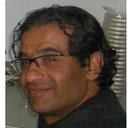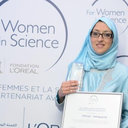Cultivating the uncultured: growing the recalcitrant cluster-2 Frankia strains.
关键词
抽象
The repeated failures reported in cultivating some microbial lineages are a major challenge in microbial ecology and probably linked, in the case of Frankia microsymbionts to atypical patterns of auxotrophy. Comparative genomics of the so far uncultured cluster-2 Candidatus Frankia datiscae Dg1, with cultivated Frankiae has revealed genome reduction, but no obvious physiological impairments. A direct physiological assay on nodule tissues from Coriaria myrtifolia infected with a closely-related strain permitted the identification of a requirement for alkaline conditions. A high pH growth medium permitted the recovery of a slow-growing actinobacterium. The strain obtained, called BMG5.1, has short hyphae, produced diazovesicles in nitrogen-free media, and fulfilled Koch's postulates by inducing effective nodules on axenically grown Coriaria spp. and Datisca glomerata. Analysis of the draft genome confirmed its close proximity to the Candidatus Frankia datiscae Dg1 genome with the absence of 38 genes (trehalose synthase, fumarylacetoacetase, etc) in BMG5.1 and the presence of 77 other genes (CRISPR, lanthionine synthase, glutathione synthetase, catalase, Na+/H+ antiporter, etc) not found in Dg1. A multi-gene phylogeny placed the two cluster-2 strains together at the root of the Frankia radiation.




